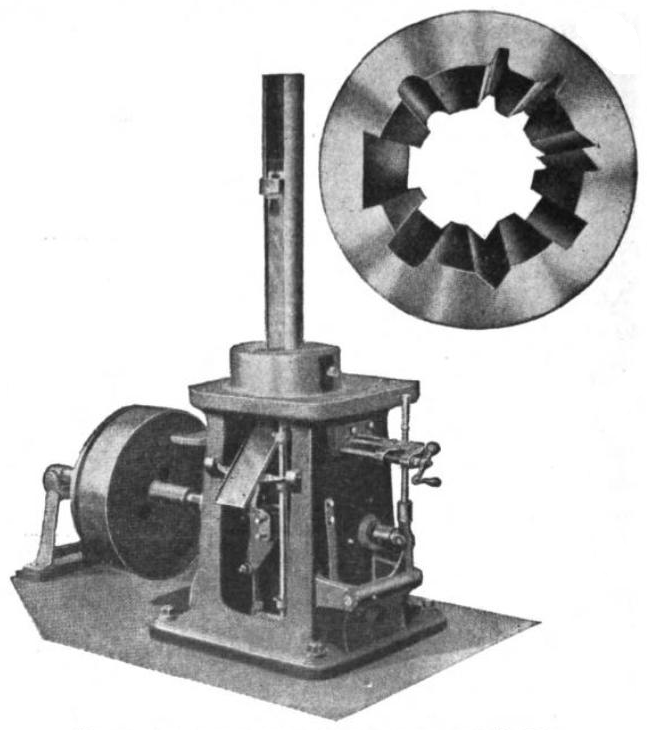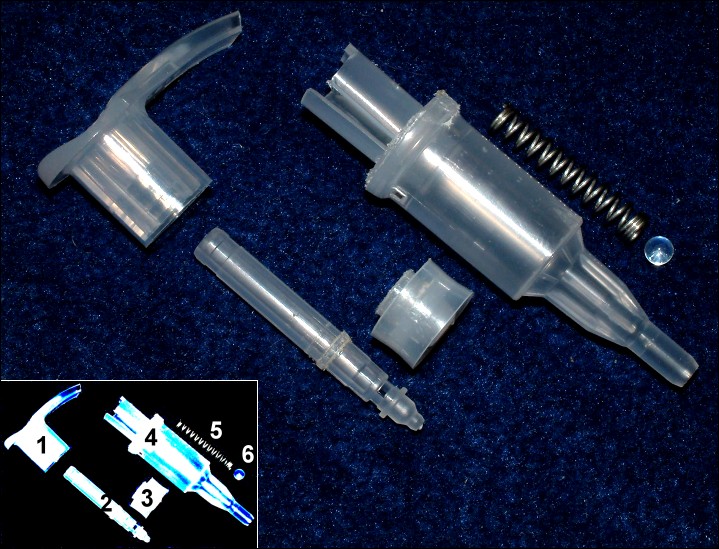|
Spring Pin
A spring pin (also called tension pin or roll pin) is a mechanical fastener that secures the position of two or more parts of a machine relative to each other. Spring pins have a body diameter which is larger than the diameter of the hole they are intended for, and a chamfer on either one or both ends to facilitate starting the pin into the hole. The spring action of the pin allows it to compress as it assumes the diameter of the hole. The force exerted by the pin against the hole wall retains it in the hole, therefore a spring pin is considered a self retaining fastener. Spring pins may be used to retain a shaft as a journal in a plain bearing, as a type of key to fasten one shaft to another, or to precisely fasten flat faces of mating parts together through symmetric hole locations. Types There are two types of spring pins: ''slotted spring pins'' and ''coiled spring pins''. Coiled spring pins A coiled spring pin, also known as a ''spiral pin'', is a self retaining enginee ... [...More Info...] [...Related Items...] OR: [Wikipedia] [Google] [Baidu] |
Fastener
A fastener (US English) or fastening (UK English) is a hardware device that mechanically joins or affixes two or more objects together. In general, fasteners are used to create non-permanent joints; that is, joints that can be removed or dismantled without damaging the joining components. Steel fasteners are usually made of stainless steel, carbon steel, or alloy steel. Other methods of joining materials, some of which may create permanent joints, include: crimping, welding, soldering, brazing, taping, gluing, cement, or the use of other adhesives. Force may also be used, such as with magnets, vacuum (like suction cups), or even friction (like sticky pads). Some types of woodworking joints make use of separate internal reinforcements, such as dowels or biscuits, which in a sense can be considered fasteners within the scope of the joint system, although on their own they are not general-purpose fasteners. Furniture supplied in flat-pack form often uses cam dowels lock ... [...More Info...] [...Related Items...] OR: [Wikipedia] [Google] [Baidu] |
Chamfer
A chamfer ( ) is a transitional edge between two faces of an object. Sometimes defined as a form of bevel, it is often created at a 45° angle between two adjoining right-angled faces. Chamfers are frequently used in machining, carpentry, furniture, concrete formwork, mirrors, and to facilitate assembly of many mechanical engineering designs. Terminology In materials and manufacturing, a ''chamfer'' is used to "ease" otherwise sharp edges, both for safety and to prevent damage to the edges; it may also be a primarily decorative feature. In general terms it may be regarded as a type of ''bevel'', and the terms are often used interchangeably. However, in machining, only the term chamfer is used for the specific technique, practice, and result. In carpentry, a lark's tongue is a chamfer which ends short of the end of a piece in a gradual outward curve, leaving the remainder of the edge as a right angle. Chamfers may be formed in either inside or outside adjoining faces of an ... [...More Info...] [...Related Items...] OR: [Wikipedia] [Google] [Baidu] |
Plain Bearing
file:NYC 100-driving-axle-friction-bearing.jpg, Plain bearing on a 1906 S-Motor locomotive showing the axle, bearing, oil supply and oiling pad file:Linear-table with detail numbered.png, A sliding table with four cylindrical bearings file:GWR Spoked wagon wheels.jpg, A Wheelset (rail transport), wheelset from a Great Western Railway (GWR) wagon showing a plain, or journal, bearing end A plain bearing, or more commonly sliding contact bearing and slide bearing (in railroading sometimes called a solid bearing, journal bearing, or friction bearing), is the simplest type of bearing (mechanical), bearing, comprising just a bearing surface and no rolling elements. Therefore, wikt:journal#Noun, the part of the Axle, shaft in contact with the bearing slides over the bearing surface. The simplest example of a plain bearing is a shaft rotating in a hole. A simple linear bearing can be a pair of flat surfaces designed to allow motion; e.g., a drawer and the slides it rests on or the way (mac ... [...More Info...] [...Related Items...] OR: [Wikipedia] [Google] [Baidu] |
Key (engineering)
In mechanical engineering, a key is a machine element used to connect a rotating machine element to a Drive shaft, shaft. The key prevents relative rotation between the two parts and may enable torque transmission. For a key to function, the shaft and rotating machine element must have a keyway and a keyseat, which is a slot and pocket in which the key fits. The whole system is called a keyed joint. A keyed joint may allow relative axial movement between the parts. Commonly keyed components include gears, pulleys, couplings, and washer (hardware), washers. Types There are five main types of keys: ''sunk'', ''saddle'', ''tangent'', ''round'', and ''spline''. Sunk key Types of sunk keys: ''rectangular'', ''square'', ''parallel sunk'', ''gib-head'', ''feather'', and ''Woodruff''. Parallel keys ''Parallel keys'' are the most widely used. They have a square or rectangular cross-section. Square keys are used for smaller shafts and rectangular faced keys are used for shaft diameters ove ... [...More Info...] [...Related Items...] OR: [Wikipedia] [Google] [Baidu] |
Spring Pin Heavy Duty
Spring(s) may refer to: Common uses * Spring (season), a season of the year * Spring (device), a mechanical device that stores energy * Spring (hydrology), a natural source of water * Spring (mathematics), a geometric surface in the shape of a helically coiled tube * Spring (political terminology), often used to name periods of political liberalization * Springs (tide), in oceanography, the maximum tide, occurs twice a month during the full and new moon Places * Spring (Milz), a river in Thuringia, Germany * Spring, Alabel, a barangay unit in Alabel, Sarangani Province, Philippines * Șpring, a commune in Alba County, Romania * Șpring (river), a river in Alba County, Romania * Springs, Gauteng, South Africa * Springs, the location of Dubai British School, Dubai * Spring Village, Saint Vincent and the Grenadines * Spring Village, Shropshire, England United States * Springs, New York, a part of East Hampton, New York * Springs, Pennsylvania, an unincorporated community * Spring, ... [...More Info...] [...Related Items...] OR: [Wikipedia] [Google] [Baidu] |
Spring Plunger
A spring plunger or detent spring is a spring-loaded mechanical part used for indexing, positioning, and securing of objects, as well as for making objects possible to disassemble in normal use without losing parts. The spring force keeps the pin in position during normal use. Typically, it is a machine part consisting of a hollow cylinder with an internal compression spring acting on a Dowel, pin. The pin may, for example, be shaped as a rod with either a cylindrical or rounded tip (broadly categorized as a ''spring plunger''), or a spring-loaded ball (Ball detent, ball plunger) if the spring acts against a ball. Manufacture Spring plungers can be supplied as a complete unit that is mounted into the workpiece by screwing into threads, or in a pluggable version that is pressed into the workpiece. The sleeve is usually made of free machining steel. Alternatively, it can be made directly into the workpiece by drilling and Tapping (threading), tapping a hole, then inserting a pin ... [...More Info...] [...Related Items...] OR: [Wikipedia] [Google] [Baidu] |
Fasteners
A fastener (US English) or fastening (UK English) is a hardware device that mechanically joins or affixes two or more objects together. In general, fasteners are used to create non-permanent joints; that is, joints that can be removed or dismantled without damaging the joining components. Steel fasteners are usually made of stainless steel, carbon steel, or alloy steel. Other methods of joining materials, some of which may create permanent joints, include: crimping, welding, soldering, brazing, taping, gluing, cement, or the use of other adhesives. Force may also be used, such as with magnets, vacuum (like suction cups), or even friction (like sticky pads). Some types of woodworking joints make use of separate internal reinforcements, such as dowels or biscuits, which in a sense can be considered fasteners within the scope of the joint system, although on their own they are not general-purpose fasteners. Furniture supplied in flat-pack form often uses cam dowels locke ... [...More Info...] [...Related Items...] OR: [Wikipedia] [Google] [Baidu] |


